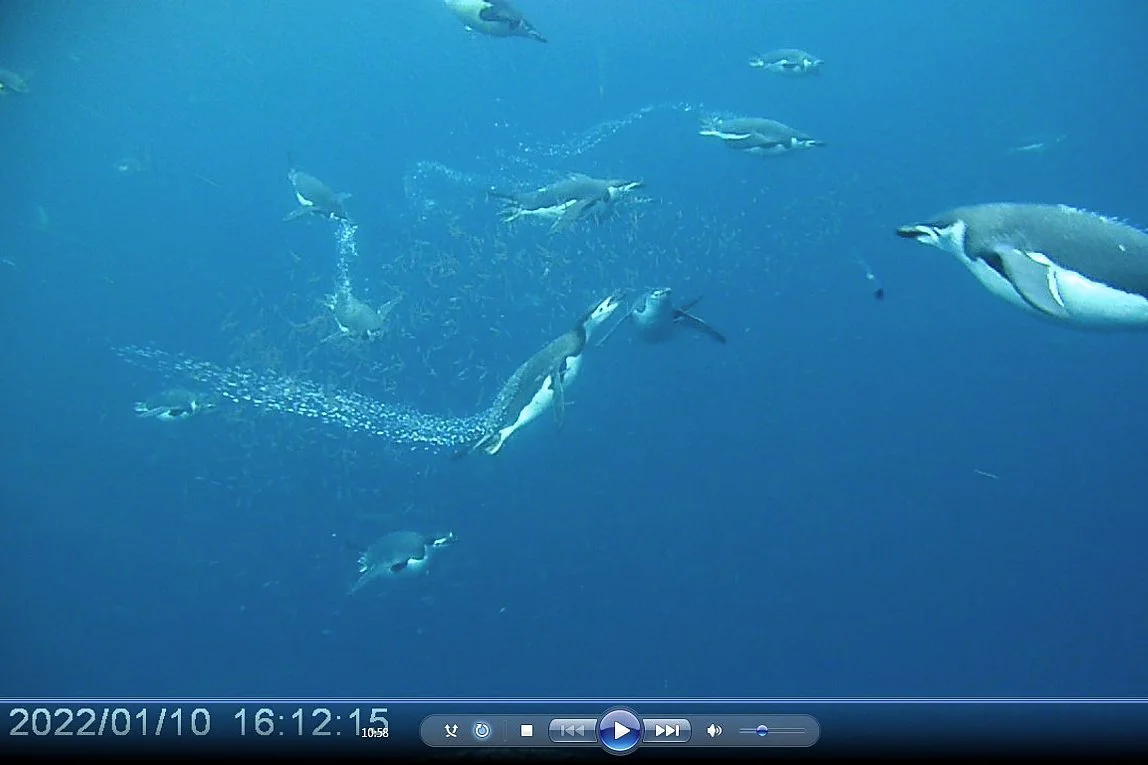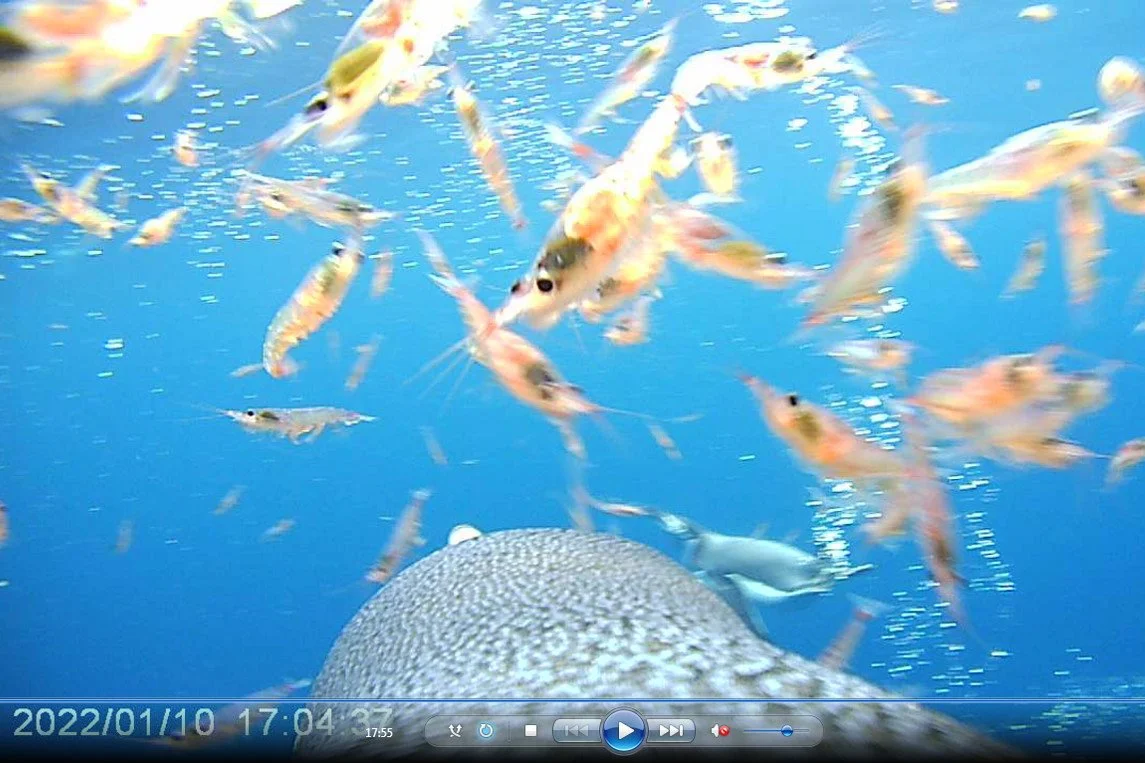Chris Oosthuizen, research fellow at the University of Cape Town in South Africa was awarded project funding fro his project “Penguin-krill functional relationships in a region of high fishing pressure: building towards appropriate monitoring indices for adaptive management of the Antarctic krill fishery” from AWR in 2021. Below his report from his first field season on Monroe Island
Penguins breed in astonishing numbers on islands scattered around the Southern Ocean. Here, scientists can study their breeding behaviour and success, and estimate how population trends change over time. But scientists have historically had a harder time studying how penguins feed. This is because it is challenging to observe directly how penguins catch their underwater prey in areas of remote ocean habitat.
“Our understanding of penguin foraging behaviour has rapidly grown during the last decades, as innovations in technology allowed ever more powerful remote monitoring” says Chris Oosthuizen, a research fellow at the University of Cape Town in South Africa. “Today, ecologists have access to a wide range of tags and sensors that can accurately measure animal position, diving depth, movement behaviour, and aspects of the environment that the animal encounters. This has opened exciting new avenues for ecological research”.
A 2021 grant from the Antarctic Wildlife Research Fund is helping Chris and his colleagues - a team comprising scientists based in South Africa, Norway, Australia and France - to do just that. They have just completed their first field season studying the foraging behaviour of chinstrap penguins breeding at Monroe Island in the South Orkney Islands. “We are particularly interested in the foraging decisions and foraging efficiency of individual breeding chinstrap penguins”, explains Chris. “We want to know how foraging efficiency changes in time and space and in relation to external factors. To do this, we deployed miniature animal-borne video cameras in combination with accelerometers, which measured the penguins’ orientation and the dynamics of movement. The video footage gives us direct signals of prey capture events and context of the environment that the penguin is foraging in. Our immediate goal is now to train a model to also detect those prey capture events in the accelerometer data, so that we can eventually look at prey capture efficiency using accelerometer data in the absence of video data, and across a larger number of individuals. This type of information is important for krill fisheries management, especially in the South Orkney Islands region, and for the improved monitoring of penguin populations that depend on krill for their survival”.
Monroe Island is a small island to the west of Coronation Island, where tens of thousands of chinstrap penguins breed annually. However, there is no research station on the island. Thus, the team set up a field camp a short distance from the penguin colonies they studied this summer.
Penguin camera figures: “We observed penguins feeding on Antarctic krill at various depths, from the surface to depths of over 100 m”, AWR grant-holder Chris Oosthuizen said. “Groups of chinstrap penguins often targeted the same prey patch, and other krill predators such as Gentoo penguins, Antarctic fur seals, fin whales and humpback whales were also recorded in the video footage.”




